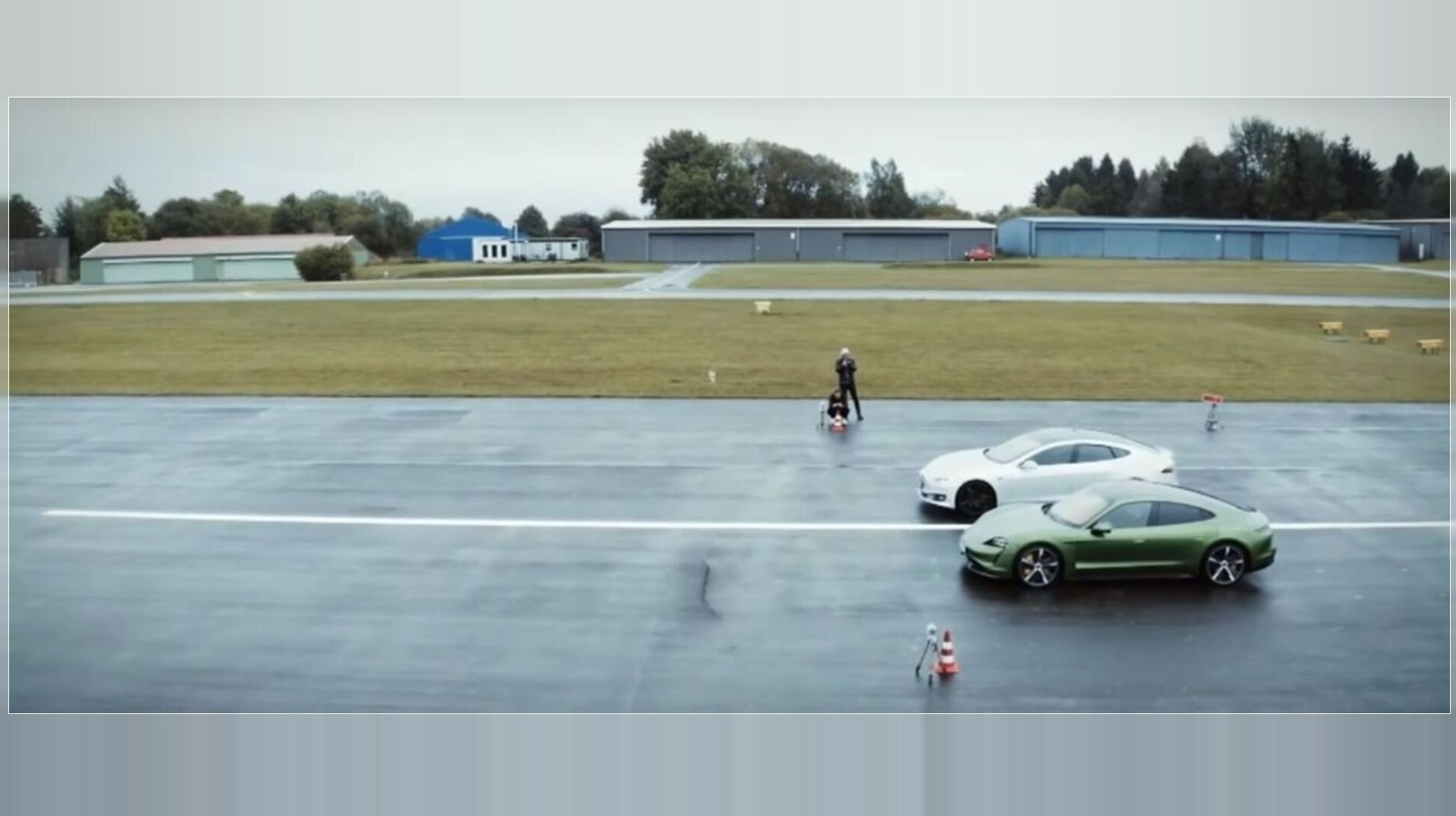

Tesla is the long-standing king of electrified acceleration. Truly, it is unparalleled by even the fiercest of liquified-dinosaur-powered competitors in a straight line. But heavy is the head that wears the crown, especially when the Germans are waiting for a chance to take their seat at the throne.
With a new rivalry heating up between Tesla and Porsche, onlookers and enthusiasts are watching from afar, wondering if the industry’s first real battle for performance electric cars will boil over. And our first taste of the coming war is thanks to a video by a German motoring publication which pairs the duo against each other in a series of tests, including the notorious moose test, and for all of us gear-head heathens, a drag race.
In both circumstances, handling and straight-line acceleration, the Porsche outperforms the Tesla. But it’s the drag race, which shows at least two car lengths between finishes, that has us questioning what sort of German witchcraft is Porsche playing with? In reality, Porsche is just playing to its strength, engineering—we do still wonder if Tesla’s updated Model S Performance would have a noticeable impact in across-the-line times.

To better understand each car’s rapid acceleration, and Porsche’s dominance on the drag strip, a separate YouTuber recently stitched together two dash-aimed videos to help feed curious minds—one of a Tesla Model S P100D with Ludicrous mode, and the newcomer Porsche Taycan Turbo S in Sport Plus mode.
As one might expect, both Porsche and Tesla strut their respective stuff as the sedans sprint from a stop, climbing all the way to 155 miles per hour (250 km/h) while a timer takes note of how fast each vehicle accomplishes the task. Although the cars seem to be fairly neck-and-neck in the first leg of the race, a surprise begins to unfold.

As the cars begin to approach 90 mph, a noticeable gap in speed begins to form. The Porsche climbs and climbs, making its way to 155 mph in just 13.5-seconds—an impressive nine seconds faster than the Tesla.
This advantage likely comes from Porsche’s inclusion of a two-speed automatic gearbox in the Taycan—a feature purposefully left out of the Model S presumably in favor of reduced costs and complexity. A multi-speed transmission begins to give the Taycan many advantages that would otherwise be absent in a direct-drive situation; most notable in this case is the ability to extend the powerband of an electric motor across a broader range of speeds without significantly increasing the motor’s workload.
When taking off in Sport or Sport Plus mode, the Taycan engages its low gear and springs to life. Around 50 mph or so, the transmission shifts to its second gear (which is roughly half the ratio of its low gear) so that it can continue propelling the car quickly at higher speeds. This helps to sustain the strenuous performance requirements for longer periods of time without experiencing overheating or perceivable loss in power.

Perhaps the biggest question that this test pulls from Pandora’s box would revolve around pitting the Taycan’s performance against Tesla’s refreshed Model S hardware. Tesla recently discontinued the P100D badging in favor of a new “Performance” trim, which features various hardware changes to increase performance and efficiency. One such change was to transplant the rear-drive unit from the Model 3 into the front of the Model S Performance, enabling the vehicle to achieve quarter-mile times as low as 10.6 seconds with a boost in range to match.
It’s important to be critical of what we’re watching, too. Both tests are fairly objective, but neither are in controlled environments nor do they feature the same driver or track surface. However, assuming conditions are fairly ideal, it does give a rough idea of where the Taycan shines: high speeds.
Maybe in the near future, we will begin to see the newest Tesla hardware side-by-side against the German’s pinnacle of plug-in performance, but by that time, Tesla may look to bring its über P100D+ prototype out of the ring and into Porsche’s backyard.